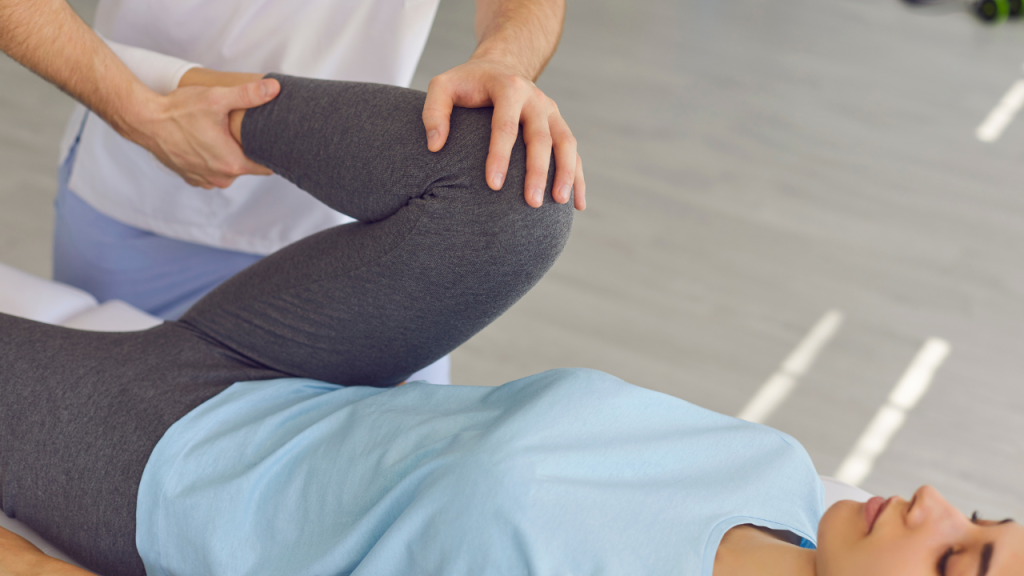
Pregnancy and childbirth bring about many changes in a woman’s body, some of which can linger long after the baby has arrived. One aspect that often goes unnoticed or ignored is the pelvic floor. The pelvic floor is a group of muscles, ligaments, and tissues that support the bladder, bowel, and uterus. During pregnancy and childbirth, the pelvic floor undergoes significant stress, leading to a range of physical challenges. Pelvic floor therapy has emerged as a critical resource for women seeking recovery after childbirth, helping them regain strength, functionality, and confidence.
At Thrive Physical Therapy, we understand that the postpartum period can be overwhelming, and pelvic floor therapy can be a vital part of healing. It’s not just about strengthening muscles—it’s about restoring balance and well-being. This therapy offers several benefits, each contributing to a better quality of life after childbirth.
Restoring Muscle Strength and Function
One of the most important aspects of pelvic floor therapy after childbirth is muscle recovery. During pregnancy, the weight of the baby, along with the pressure exerted on the pelvic floor, can weaken the muscles and tissues. After childbirth, these muscles may have become overstretched or weakened. This can lead to symptoms like urinary incontinence, pelvic organ prolapse, and decreased sensation in the pelvic area.
Pelvic floor therapy helps restore strength to these muscles through targeted exercises. A physical therapist trained in pelvic health will guide you through exercises that not only strengthen but also retrain the muscles to work in harmony. These exercises are tailored to your specific needs and recovery goals, focusing on improving both strength and flexibility in the pelvic region.
By gradually rebuilding pelvic floor strength, therapy can help alleviate common postpartum symptoms, such as bladder leakage and a feeling of heaviness or pressure in the pelvic area. This improvement not only enhances physical comfort but also boosts emotional well-being by allowing women to regain control over their bodies.
Reducing the Risk of Postpartum Incontinence
Postpartum incontinence is one of the most common and distressing issues faced by new mothers. The pelvic floor muscles play a vital role in controlling bladder function, and after pregnancy and childbirth, these muscles may struggle to perform their job. For many women, incontinence can be a source of embarrassment, frustration, and self-consciousness.
Pelvic floor therapy is incredibly effective in addressing postpartum incontinence. Through exercises and techniques designed to strengthen the pelvic floor muscles, women can regain control over their bladder. Therapists often incorporate biofeedback, manual therapy, and electrical stimulation into the treatment plan to ensure the best results. Over time, these therapies help re-establish proper muscle function, reducing or eliminating incontinence symptoms altogether.
Improving Posture and Reducing Pain
Pregnancy and childbirth can take a toll on a woman’s posture. Carrying the baby, the physical changes during pregnancy, and the process of childbirth itself can lead to imbalances in the body’s alignment. This may result in back, hip, or pelvic pain, which can persist well into the postpartum period.
Pelvic floor therapy isn’t just about strengthening muscles—it’s about restoring balance to the entire body. A skilled physical therapist will assess your posture and identify areas of tension or weakness. Through targeted exercises, stretching, and manual therapy, pelvic floor therapy can help realign the pelvis and spine, relieving pain and discomfort. By improving posture, therapy also contributes to better core strength and stability, which can help prevent future injuries or discomfort.
Preventing Pelvic Organ Prolapse
Pelvic organ prolapse occurs when the muscles and ligaments of the pelvic floor are no longer strong enough to support the bladder, uterus, or rectum. This condition can cause a feeling of fullness, pressure, or even the sensation that something is falling out of the vagina. While pelvic organ prolapse is more common after childbirth, it can happen to women of all ages, particularly if the pelvic floor is weakened by pregnancy and labor.
Pelvic floor therapy can play a significant role in preventing or managing pelvic organ prolapse. Through strengthening exercises, pelvic floor therapy helps increase the support for the pelvic organs, reducing the likelihood of prolapse or worsening symptoms. For women who are already experiencing prolapse, pelvic floor therapy can help manage the condition by strengthening the muscles and providing better support for the organs.

Enhancing Sexual Health and Comfort
Sexual health is often an area that is overlooked after childbirth. For many women, intimacy can become uncomfortable or even painful due to changes in the pelvic region. This can be caused by scar tissue from a tear during childbirth, muscle weakness, or simply the physical changes that occur during pregnancy.
Pelvic floor therapy can significantly improve sexual health and comfort. By strengthening the pelvic floor muscles and improving blood flow to the area, therapy can help reduce pain during intercourse and increase overall sexual satisfaction. Additionally, pelvic floor therapy promotes better body awareness and confidence, allowing women to feel more comfortable and in control of their bodies. A therapist may also work with you to address any specific concerns, providing personalized exercises to improve sexual function.
Emotional and Psychological Benefits
The postpartum period is not just a time of physical recovery but also a time of emotional adjustment. Many women experience changes in their mental health, including feelings of anxiety, depression, or frustration due to the physical challenges of recovery. Pelvic floor therapy offers not just physical benefits but also emotional support.
As women regain control over their bodies and experience relief from pain and discomfort, their mental well-being often improves as well. The sense of empowerment that comes with taking charge of your physical health can lead to increased confidence and a better mood overall. A trained therapist can provide not just physical therapy but also emotional support, helping you navigate the challenges of the postpartum period with confidence and resilience.
Tailored Treatment for Your Unique Recovery Journey
One of the most valuable aspects of pelvic floor therapy is that it is personalized to each woman’s needs. Every pregnancy and birth experience is unique, and so is every woman’s recovery. Whether you had a vaginal birth or a cesarean section, pelvic floor therapy can be adapted to suit your specific situation.
At Thrive Physical Therapy, our therapists are trained to assess each woman individually, taking into account her physical condition, recovery goals, and any unique challenges she may be facing. This individualized approach ensures that the therapy is effective and targets the specific areas that need attention. As you progress in your recovery, your therapist will modify the treatment plan to reflect your ongoing needs and goals, ensuring continuous improvement.
Conclusion
Pelvic floor therapy after pregnancy and childbirth is more than just a treatment—it’s a journey to reclaiming your health and well-being. By restoring muscle strength, improving posture, preventing prolapse, and enhancing sexual health, pelvic floor therapy can make a remarkable difference in your postpartum recovery. At Thrive Physical Therapy, we understand the importance of personalized care and offer expert guidance to help you navigate this essential part of your recovery journey. If you’re looking to regain strength, restore balance, and feel empowered, pelvic floor therapy could be the key to a healthier, happier postpartum experience.
For more information and to schedule an appointment with our skilled team, visit Thrive Physical Therapy. Your body deserves the best care—let us help you on your recovery path.

